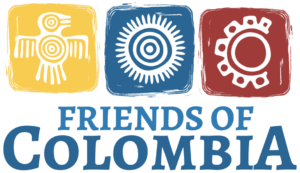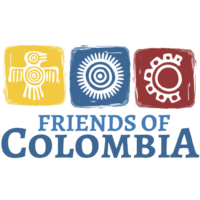By Jeremy Booth
Generally speaking, once you decide to get one, there is a lot of freedom regarding tattoos. There is no formula to tell what exactly to get, where to place it, or how big to make it. Should it be colorful or just black? You can get a portrait or a symbol or a phrase. Really whatever you want. The one rule, however, that most people recommend following, is that you make sure it is meaningful to you.
With that said, I wouldn’t blame you for thinking I possibly broke the one cardinal rule when tattooing in bold letters a Colombian phrase that roughly translates to “Top off my drink, buddy.”
—
“Échame la ñapa, compa’” now permanently resides on the right side of my rib cage.
The big block letters are meant to replicate fonts you might see on a Pickup (large speakers used for concerts and block parties). There’s also a small, gloved hand giving a thumbs up to whoever reads it, a gesture that anyone who uses the phrase might readily use. Sadly, albeit intentionally, that thumbs up will often be the only thing that makes sense to many witnesses; even the tattooist in Medellín was uncertain of the phrase’s meaning.
But that’s fine, because it honestly does mean something profound to me. Primarily, it gives me a tangible reminder of my connection to Barranquilla, my home from August 2013 to January 2016. It also represents a cultural phenomenon that I want to always be a guiding part of my life.
However, it’s not just for me; anyone who is from or has spent significant time in the Caribbean coast of Colombia will likely understand. The tattoo also serves a dual purpose. Its primary reason for renting space on my ribs is meant to make anyone who sees it laugh. Not because the phrase is comic in its meaning, but because it is SO Barranquillero that it’s shocking to see it boldly written on a Gringo’s pasty torso. The second purpose, the more important of the two, is to be a tribute.
“La ñapa,” (pronounced nya-pa) at face value, is simply a little extra beverage that a street vendor offers when you buy a cup from him or her. I became familiar with it in el centro de Barranquilla, a bustling place where pushcarts with transparent 20-gallon tubs of icy cold drinks abound. The venders might be selling lemonade, tutti frutti, or my favorite, or limonada de mandarina (orange-ade, if you will), and the content of those cups can sometimes be the only thing that keeps you from losing your cool in the hectic heat of this central shopping district. Stop at one of these carts, hold up an index finger, receive that drinkable saving grace de los dioses, and savor the sugary relief.
But in Barranquilla and the coastal cities nearby, the exchange does not end here: you’ve yet to get la ñapa, an extra ladle of drink to bring your cup back to the brim. I’ve heard debate around the etiquette of la ñapa, but general consensus suggests that it can be between ⅓ to ½ of your cup. Its provision is universal in the region, and practically automatic. If you somehow forget this glorious bonus, don’t be surprised if the vendor waves their hand at you to remind you of your forgotten ñapa.
—
If the extra pour doesn’t seem special enough to tattoo a permanent tribute on your body (a decision 5 years in the making) just think about what it represents. As I said, la ñapa is often as much as a half-refill. This means that the vendor, selling a delicious cup of refreshing lemonade, usually for the equivalent of about 30 cents USD, is giving away one third of their product FOR FREE.
It’s even more than that. If you’ve never been to el centro de Barranquilla, you cannot underestimate how hot it can get. The concrete buildings surround you and buses and taxis spew mechanized heat, contributing to an already suffocating temperature produced by the hovering sun. So to arise every morning before said star, fill a massive tank with water, sugar, and hand-squeezed fruit juice, wheel it God-knows-how-far (often miles) to the market to have the best chance at earning a decent day’s wages, just to give a third of it away FOR FREE… No joda. It is either bad business, or something truly special. I think it’s the latter, which is what convinced me to get the tattoo.
La ñapa represents sacrifice: it’s additional work to provide some happiness to customers. La ñapa represents selflessness: it’s setting aside your financial needs to offer relief to an overwhelmed shopper. La ñapa represents community: it’s a demonstration of how, despite struggles, some people will give up a little of what they have so that another can enjoy it. Que vaina linda, eh?
While la ñapa is a tangible offering, it’s the intangible meaning of it that made getting this tattoo, which might seem silly at first, an easy decision. As I said, even though la ñapa brings back fond memories of Barranquilla, it’s most importantly a reminder of how I want to live moving forward.
Entonces, échame la ñapa, compa´



